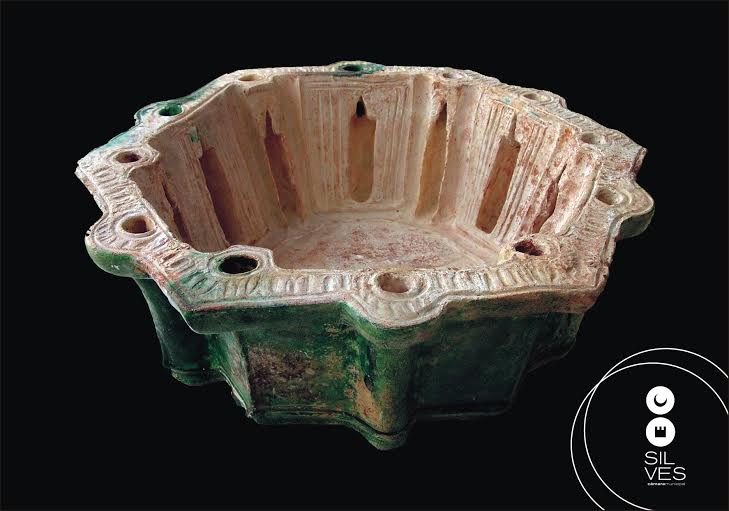 A 1053th-1465th century ablution sink, an archaeological object from the Municipal Museum of Archeology of Silves, is part of the exhibition “Le Maroc Medieval (17-XNUMX)”, which will open on Friday, October XNUMXth, at the Museu do Louvre in Paris.
A 1053th-1465th century ablution sink, an archaeological object from the Municipal Museum of Archeology of Silves, is part of the exhibition “Le Maroc Medieval (17-XNUMX)”, which will open on Friday, October XNUMXth, at the Museu do Louvre in Paris.
The ablution sink is a piece with a glazed finish and stamped decoration, with an Almohad chronology (XNUMXth-XNUMXth centuries), originating from archaeological excavations that took place in the castle of Silves under the scientific direction of Rosa Varela Gomes and with extensive restoration work carried out in the Conservation and Restoration services of the Municipality of Silves.
The object has already been studied and published by the archaeologist who, however, gives it a different functionality, and is part of the reserves of the Municipal Museum of Archeology of Silves.
Due to its importance, this object will thus be part of the exhibition “Le Maroc Medieval”, where, in addition to artistic and scientific creations of Medieval Morocco in its various domains, other results of ancient and recent archaeological interventions will also be highlighted, showing pieces preserved in international museums, mosques and church treasures.
This is an unprecedented research project that will allow a new reading of this part of the Islamic world, essentially seen from Andalusia, reconstituting the essence of the history of Morocco as a creator of empires.
The exhibition follows a chronological line, with each of its historical periods punctuated by sets of information about cities, places of power and historical capitals.
It is a kind of historical itinerary from Fez to Seville, which takes us through Agmat, Marrakesh, Cordoba, Tinmal, Rabat, but also walking from the south of the Sahara desert (North fringe of present-day Mauritania), north of Algeria and Tunisia today.
The objective of this theme for the Louvre is to explain to the public its long and rich history, the key to understanding contemporary Morocco and the source of its modernity. It is also an opportunity to pay tribute to the researchers who started the rediscovery of their past and to recover several exceptional works.
After the exhibition at the Louvre Museum, which will end in mid-January 2015, this piece is still two others from the Museum of Mértola, will be presented at the Museum of Contemporary Art in Rabat (Morocco), where it will remain on display from March to June of next year.


















Comments